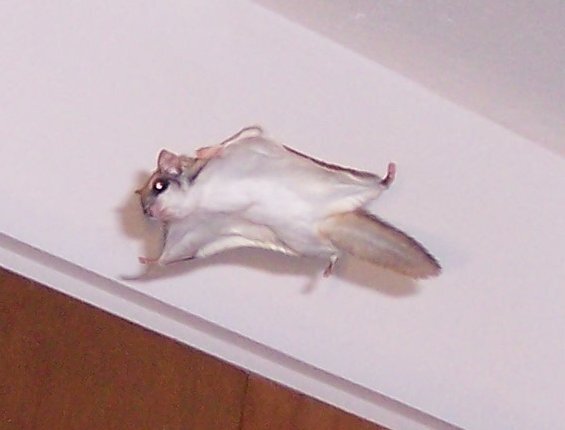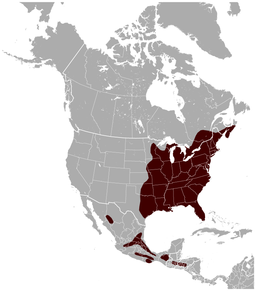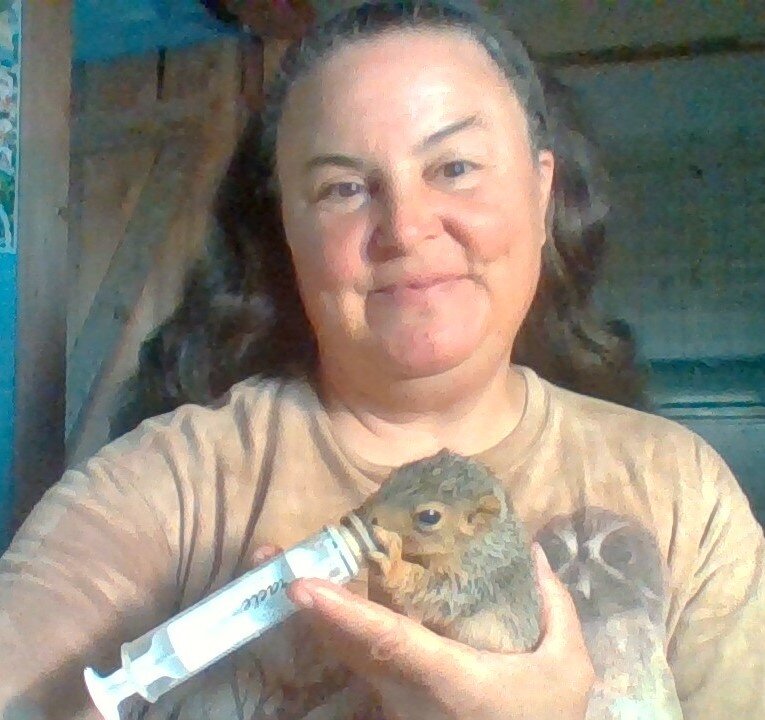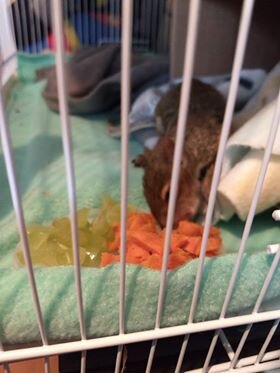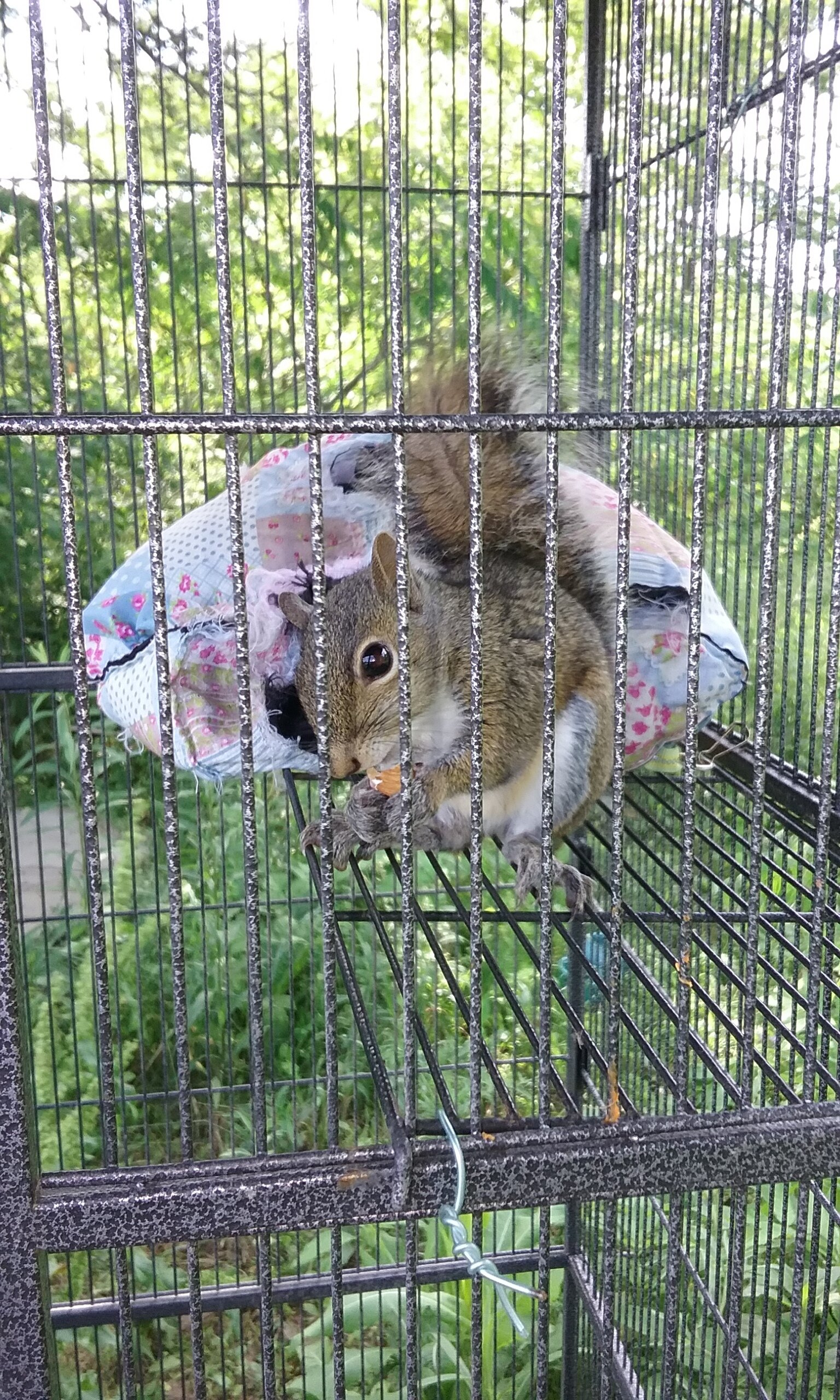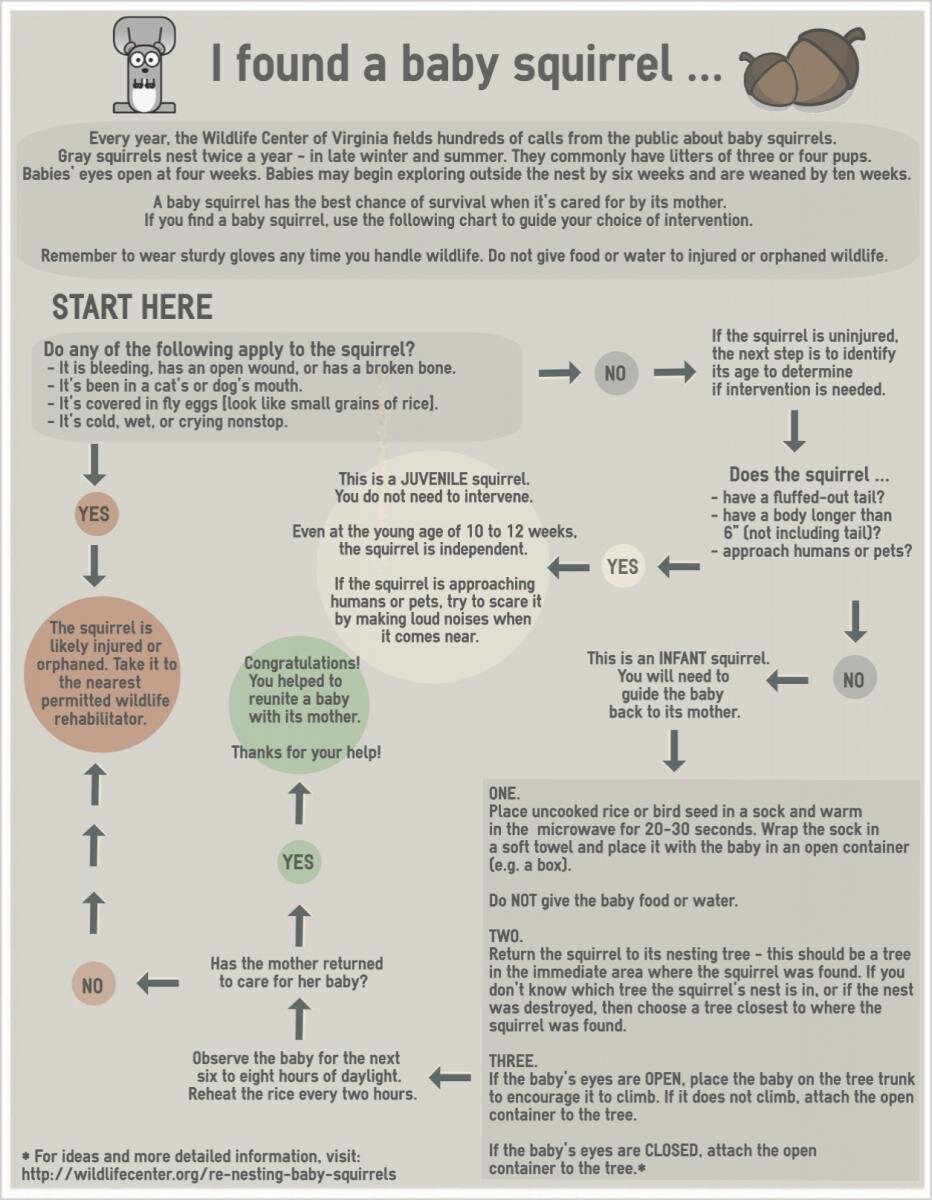You may love squirrels (or hate them) but you have to admit their antics are fun to watch. They are determined and creative in their quest for food and shelter. Small animals with sleek fur and bushy tails squirrels have adapted well to urban parks and family backyards.
Squirrels are fabulous climbers. Tree squirrels have the interesting ability to rotate their ankles 180 degrees which allows them to turn their feet out gripping the bark more efficiently. This makes it easy for them to go up the tree and head first climbing down.
Species Variation and Region
Squirrels are very widespread throughout the world. They are rodents and related to chipmunks, groundhogs and prairie dogs.
There are over 200 species worldwide inhabiting all continents except Antarctica and Oceana. There are five species found in the United States with three of them living in Kentucky.
Kentucky Impact
In Kentucky, we have three species of squirrels, all which live in trees. These tree-dwellers include the eastern gray (Sciurus carolinensis), Eastern Fox squirrels (Sciurus niger) and southern flying (Glaucomys volans). Note the different taxonomy of the flying squirrel.
Gray Squirrels
Grey squirrels are found throughout North America but more prominently on the east coast. They are widespread throughout Europe where they are considered an invasive species.
They are predominantly gray with a white belly. Tails have white hair tips. They can also be white (albino) or black (melanistic) an adaption that has felt to flourish in urban areas due to lower predation.
Their bodies are about fifteen to twenty inches in length including seven inches or so for the tail. They weigh around one to one and a half pounds. Gray squirrels are the most common squirrel species in Kentucky.
Fox Squirrel
Fox Squirrels are larger than grays and range from eighteen to twenty-seven inches and up to two and a half pounds (2.5). They have salt and pepper gray hair on their backs with yellow to orange coloring on their upper body parts. With pale yellow to bright orange bellies. Tails have yellow tips.
Fox Squirrels and grays occupy much of the same habitat. Fox Squirrels prefer a more wooded area and are not as likely in heavily urban areas with fewer trees. In Kentucky, we see them more in Eastern Kentucky.
Flying Squirrel
The flying squirrel is a tree dweller but it has a unique method of transportation. The flying squirrel has large flaps of skin called patagia which gives them a square shape when they extend their limbs. Their tail provides stability.
The flying squirrel does not actually fly. It glides. This mobility pattern is also seen in bats and flying lizards as well as the extinct pterosaurs
Photo by Michael Hays
They live in nests or tree holes and can glide up to one hundred and fifty feet. They are nocturnal and not observed as often as other species. Flying squirrels eat a more varied diet and are omnivores.
In Kentucky, we have the southern flying squirrel which is distributed over the eastern side of the United States and into Central America. In Wisconsin, we have the Northern Flying Squirrel (Glaucomys sabrinus) which is a species listed as Special Concern and protected.
Range of the southern flying squirrel
Living Habitat
Squirrels with the exception of the ground squirrel live in trees. They prefer hardwood forests such as oak and hickory but can be found in a variety of ecosystems. Squirrels have adapted well to urban environments including backyard feeders. They do come down to the ground to look for and gather food.
Home range and movements of squirrels have been widely studied. For the most part, squirrels have small territories especially if food is plentiful. Typically covering several acres although squirrels have been reported to range from 1 to 100 acres.
A group of squirrels is called a scurry or dray. Squirrels are very territorial. They may be crepuscular, nocturnal or depending on the species.
Squirrels do not hibernate but may experience torpor when the weather is cold.
What Do Squirrels Eat?
Squirrels are primarily herbivores or vegetarians. They eat a variety of nuts, seeds, fungi, fruits, and vegetables. Favorite nuts include acorns, hickory nuts, and walnuts. However, they do eat insects and occasionally small vertebrates such as baby birds and young snakes.
Foxes and Greys are scatter-hoarders which means they hide their food in a variety of places. Spring is a hard time for squirrels because their hoards are diminished or sprouting roots from being underground. Scatter hoarders have the advantage of many hiding places so that they don’t have all their eggs in one basket so to speak.
In spring squirrels will mostly eat buds from trees. Squirrels also knaw on deer antlers as well as other bones for the minerals. Squirrels eat about a pound of food per week. They need a lot of energy for all those antics!
Scientists argue about whether squirrels hiding of food is instinctual or involves a thought pattern. Squirrels have been observed pretending to hide food if they feel they are being watched. They also will hide food in various locations based on what predators are in the area.
Up to twenty-five percent of the squirrels caches are found and eaten by other animals. And of course, the squirrel helps to regenerate the forest as many of their nuts end up sprouting.
In addition, squirrels will make false caches in order to fool the possible thieves. This implies that the squirrel uses learned knowledge to decide when and where to cache their winter storage.
Mikel M. Delgado who studies squirrel behavior has found that the eastern fox squirrel will organize their caches according to the variety of nuts and seeds. In a study of 45 fox squirrels, he found that they would organize there nuts and remember which type of nut was buried at which location. He states that this behavior demonstrated “ spatial chunking in a scatter hoarder underscores the cognitive demand of scatter-hoarding”.
Predators
Squirrels have a lot of natural predators. Many birds of prey such as owls and hawks as well as foxes and snakes.
And of course man. Humans hunt squirrels for meat. Humans are also responsible for habitat destruction. This may be cutting down and old tree in the backyard to cutting down woods for a subdivision.
Senses
You may have noticed that squirrels have large eyes in proportion to their heads. Squirrels have excellent vision. They also have an excellent sense of hearing and good smell senses to find hidden nuts and seeds. Fun fact: They can smell their hidden nuts under a foot of snow.
Squirrels also have a good sense of touch. They have whiskers or vibrissae on their heads as well as vibrissae hairs on their legs. This helps them send sensory messages to the brain.
Squirrels have twenty-two (22) teeth. Their incisors grow continuously throughout there life and they need to chew or knaw on things to keep them in check.
Lifespan
Squirrels live five to ten years in the wild and up to fifteen in captivity. Young squirrels have a poor survival rate due to predation. On average, one in four squirrel kits will survive their first year, with mortality around 55% for the second year of life.
Once they are mobile and on their own their life expectancy increases.
Squirrels are also susceptible to ticks, mange mites, fleas, and internal parasites. Many of our rehab babies come into the center with parasites.
Reproduction
Squirrels in Kentucky and other states mate and have babies twice a year in the spring and fall. The babies are called kits. Male squirrels are known as “boars” and female squirrels are called “sows’”.
Male and females are similar as far as size and coloring. You often have to be able to see their sexual attributes to know if its mom or dad raising your bird feeder.
Squirrel courtship can be fun to observe. The males will chase the female with the dominant male often being the breeder. Squirrels do not form pair bonds and the male is not active in raising the offspring.
The breeding season ranges from December to February and May to June. Gestation is an average of about forty-four (44) days.
Mother squirrels are very protective and will fight off predators trying to attack their babies. Depending on the species squirrels build dens inside the hollow of a tree or nests called dreys. Dreys are built in the fork of a tree. Dens are typically in a hollow of a tree and lined with leaves and grasses.
Three to four kits are born in the litter.
Baby squirrels are born naked with ears and eyes closed. Fur begins to grow at one week and they open their eyes at about four weeks. They stay in the nest for the first six weeks of life. They then start to explore with mom supervising.
Check out our squirrel video as Farmer Ame tells a folktale and visits with the baby squirrels.
Rescue and Rehabilitation
I often get asked why do I rehabilitate squirrels (besides the fact that they are cute). After all squirrels are rodents and in plentiful supply. However, squirrels are an important part of the eco-system. They disperse seeds throughout their territory which encourages continued growth of the forest. In addition all those hidden caches also supply food for many other species.
They are quite frankly an important prey food. Many animals depend on squirrels for food. By rescuing them we participate in the circle of life. Many times our rehab animals come to us through human error. Trees with baby squirrels are cut down or parents are trapped and killed for getting in houses.
We rehab about fifteen squirrels a year. Our goal is to raise them until they are ready to survive on their own.
The babies are given formula until weaning. At that time they start to receive natural foods and can go into a pre-release enclosure outside.
Check out the graphic below to help you decide if a squirrel needs intervention (not all do).
From the Wildlife Center in Virginia
Diseases/Zoonoses
Like all mammals, squirrels can get rabies. However, they rarely do and are not considered a rabies vector animal.
You should not try to pet or handle wild squirrels. They can and do bite. Yes, I know this from experience. Squirrels carry bacteria in their mouths which can cause an infection.
If you are bitten by a wild squirrel you should clean the wound immediately with soap and water. Call your physician if you see any signs of infection such as red or swollen skin.
The plague is caused by bacteria called Yersinia pestis and is transmitted by fleas. Squirrels are sometimes carried by infected fleas. While rare, Kentucky has had outbreaks of plague. Random outbreaks have been more common in southwestern states. Today plague is easily treated with antibiotics.
Check out my video on squirrels!
Kentucky Hunting and Trapping
After the early pioneers killed off many of the larger game in Kentucky, including white-tailed deer and black bears, they turned to smaller animals for food. Squirrels became a popular hunting target.
The KYFW states that “More hunters participate in squirrel hunting than in any other type of hunting in Kentucky”.
Kentucky has two hunting seasons for squirrels, spring and fall. The daily limit is 6 squirrels.
Threats to livestock or property
Squirrels are not a big threat to livestock but they can wreak havoc in the garden and yard.
They are more of a problem when they decide to live in your attic, eaves or walls of a house. This may be a mother looking for a safe place to have her babies. Make sure your house is squirrel free before making repairs.
The most important thing you need to do is to perform a house check. Look for any loose boards, siding, gutters, and fascia. These are all areas where a squirrel could enter the home. Make sure the house is tight with no openings. When you are excluding squirrels use one fourth or one-half-inch hardware cloth Do not use steel wool or window screening as squirrels can chew right through it.
Trim trees so that the branches do not come within six feet of the roof. This will eliminate their access.
Gardens
Squirrels like and need to chew, both for nutrition and to keep their teeth from growing too long. Squirrels may chew on the bark and cambion of ornamental and orchard trees.
Birdfeeders
There are several tricks you can use to help keep squirrels from raiding your bird feeders.
String a wire between two trees and hang the birdfeeder in the middle of the wire away from any branches. You can also use thread spools to make the wire more intimidating.
Use a special squirrel stopper pole that stops squirrels from climbing to the bird feeder.
Feed foods in the bird feeder that squirrels do not like such as safflower and nyjer seed.
Squirrels are excellent chewers and can chew through thick plastic. Go for a bird feeder that is metal and has a cage surrounding it that is sized for the species of bird you are attracting.
Check out these squirrel proof bird feeders
The best way (in our opinion) is to give the squirrels there own feeding area. Squirrels, like birds are a joy to watch, and deserve our love too.
Keep reading.
Improve habitat for squirrels
Squirrels, like birds, so appreciate a little snack. Adding a squirrel feeder will not only give squirrels some added nutrition in winter but will also appease them and make them less likely to go after your bird feeder (maybe!).
I find that feeding squirrels also lowers my garden damage. You can also check out the homemade squirrel feeder in my video Stories With Squirrels
You can also build or purchase a squirrel nesting house.
Squirrel Refuge has a great design on their website.
Pets
Literature/Folklore
Have you noticed that squirrels are popular in folktales. They are often portrayed as noisy and aggressive and characters that spread gossip.
Norse mythology has the tale of Ratatoskr, sometimes translated as Drill-Tooth, who carries messages from Ygdrassil (the worlds bottum) to the world’s summit. He carries messages between the serpent-dragon, Niohoggr, and the eagle, Veorfolnir.
The Native American Choctaw believed that a black squirrel tried to eat the sun. This caused a solar eclipse. When members saw a eclipse start they would make a bunch of noise to scare the black squirrel away.
As a spirit animal squirrel symbolises the importantce of play and enjoying life. They may be telling you to unburden yourself. If your spirit animal is a squirrel you are very good at balancing work and play and bring joy to others.
Beatrix Potter wrote a deligtful childrens tale - The Tale of Squirrel Nutkin
One of my favorite stories to tell children, and is featured in my video Stories With Squirrels, is the Native American story How Chipmunk Got his Stripes.
Author, Ame Vanorio has 25+ years of experience living off-grid and as an organic farmer. She is the director of Fox Run Environmental Education Center and a licensed wildlife rehabilitator.
Affiliate Information
As an Affiliate Associate with select sites, Fox Run Environmental Education Center, may earn fees from qualifying purchases. We only refer products that we have used and will use again. As a non-profit 100% of monies earned goes into our education and wildlife rehabilitation programs. There is no extra cost to you! Just enter the site via our recommendation and purchase whatever it is you want.



